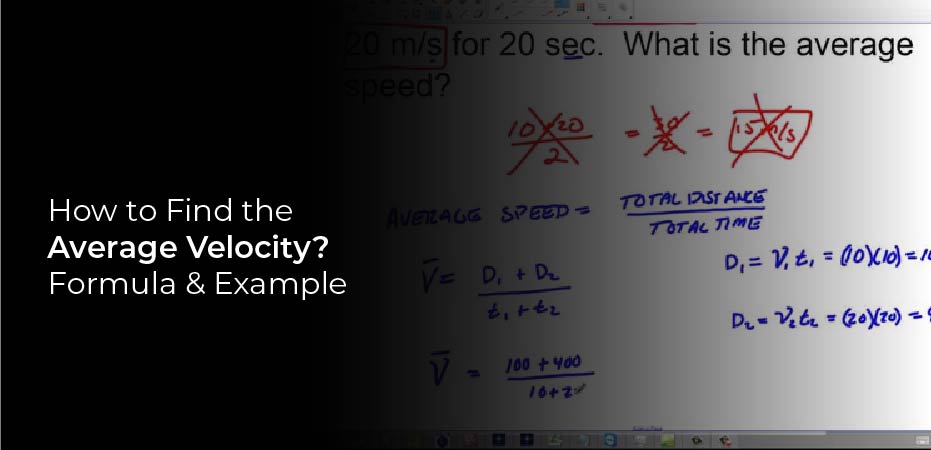
How to Find the Average Velocity? Formula & Example
Table of Contents
How to find average velocity? When we talk about an object’s average speed, we are talking about the total distance traveled divided by the total time it took to travel that distance. This is a valuable measure because it allows us to compare speeds between objects that have traveled different distances in different amounts of time.
For example, imagine you are driving down the highway at 65 mph. Your average speed is 65 mph even though your maximum speed might be 75 mph. Now imagine you are driving down a country road at 25 mph. Your average speed is still 25 mph, even though your maximum speed might be 50 mph.
Average velocity is similar to average speed, but it takes into account direction as well as speed. To calculate average velocity, you need to know both an object’s displacement (the amount it has moved from its original position) and its velocity (the magnitude and direction of its movement).
Average Speed
In order to calculate the average speed of a moving object, you would divide the total distance traveled by the total time it took to travel that distance. This calculation is often used when measuring how efficient a mode of transportation is.
For example, an airline might advertise an average speed of 500 miles per hour in order to lure customers. However, this calculation does not take into account any delays that may have occurred during the journey. In reality, the average speed of a plane might be much lower than 500 miles per hour.
The average speed of an object is calculated by dividing the total distance the object has traveled by the total amount of time it has taken to travel that distance. This equation can be simplified by using the symbol “v” for average speed, “d” for distance, and “t” for time. So, v = d/t.
Average Speed Example
When calculating the average speed of a moving object, one must take into account the distance traveled and the time it took to travel that distance.
For example, if an object moves 100 meters in 10 seconds, its average speed is 10 meters per second. This calculation can be used to determine how long it will take an object to move a certain distance. If an object has an average speed of 10 meters per second, it will take 1 second to move 10 meters, 2 seconds to move 20 meters, and so on.
Average Velocity
In physics, average velocity is defined as the total displacement divided by the total time it took to travel that displacement.
This is a measure of how fast an object is moving on average over a given distance. Average velocity can be represented by the equation:
V = Δx / Δt, where V is average velocity, Δx is the change in position, and Δt is the change in time.
Average Velocity Example
In baseball, the average velocity of a pitched ball is about 90 miles per hour. However, there is some variation around this number, as pitchers can throw different types of pitches with different velocities. For example, a fastball might have a velocity of 95 miles per hour, while a curveball might have a velocity of only 80 miles per hour.
The average velocity can be useful for predicting how far a ball will travel after it is hit. If we know the average velocity of a ball and the angle at which it is hit, we can use basic trigonometry to calculate how far the ball will travel.
How to Find Average Velocity?
Average velocity is the average speed of an object moving over a certain period of time. To find average velocity, divide the total distance traveled by the total time it took to travel that distance. Average velocity is always represented in terms of meters per second or miles per hour.
There are a few ways to calculate average velocity. One way is to use a formula. The formula for average velocity is:
V = (distance traveled) / (time traveled)
Another way to calculate average velocity is by using a graph. When graphing motion, the x-axis represents time and the y-axis represents distance.
Difference between Average Speed and Average Velocity
When discussing motion, we often use the terms “average speed” and “average velocity.” Average speed is the total distance traveled divided by the total time it took to travel that distance. Average velocity, on the other hand, is a vector quantity that takes direction into account. It is calculated as the displacement divided by the time it took to travel that displacement. In order to understand the difference between these two quantities, let’s consider an example.
Suppose you walk 1 mile in 30 minutes. Your average speed would be 1 mile per hour (1 mph), but your average velocity would be 0 mph because your direction didn’t change. If you walked 1 mile in 5 minutes, however, your average velocity would be 2 mph because your direction changed from east to west.